Who was the Japanese First Air Fleet commander during Pearl Harbor?

 Who was the Japanese First Air Fleet commander during Pearl Harbor? Meet Vice Admiral Chūichi Nagumo, the Japanese admiral who was opposed to the attack on Pearl Harbor, but was commander-in-chief of the First Fleet Fleet during the attack.
Who was the Japanese First Air Fleet commander during Pearl Harbor? Meet Vice Admiral Chūichi Nagumo, the Japanese admiral who was opposed to the attack on Pearl Harbor, but was commander-in-chief of the First Fleet Fleet during the attack.
On April 10, 1941 – just six months before the attack on Pearl Harbor – Chūichi Nagumo was appointed commander-in-chief of the First Air Fleet, the IJN′s main aircraft carrier force. Although he had his critics, Nagumo was appointed largely due to his seniority. Despite his limited experience, he was a strong advocate of combining sea and air power.
One of the most interesting things about Vice Admiral Chūichi Nagumo is that he was opposed to Admiral Isoroku Yamamoto’s plan to attack the United States at Pearl Harbor, but was the commander of the First Air Fleet and oversaw the attack.
It’s kind of like when a boss orders an employee to do something they don’t believe in, and are forced to carry out the order because it’s coming from a higher superior.
In any case, Nagumo received the signal to attack from Tokyo on December 2nd and relayed the message to his ships that the attack was on. His fleet arrived in Oahu for a surprise attack, with the first wave being a complete success. The second wave of attacks also was a success, but experienced a greater loss of planes due to American fire from the ground.
Part of Admiral Isoroku Yamamoto’s plan was to destroy US aircraft carriers at Pearl Harbor, but when Nagumo learned that they were not there, he had a major question to ask himself: Continue with the attack at the risk of losing more planes (and run the risk of being attacked by the unaccounted for aircraft carriers), or halt the third wave of attack and head back to Japan.
The biggest targets had already been hit. Both waves had been successful in causing major damage. The location of the aircraft carriers were unknown.
What would you do?
If you were Vice Admiral Chūichi Nagumo, you made the decision to withhold the third attack, spare your men, and turn back to Japan. This decision was later criticized, because a third wave of attacks could have destroyed the fuel oil storage and repair facilities on the US at Pearl Harbor, and would have rendered the most important US naval base in the Pacific useless. This is especially important because the submarine base and intelligence station at Pearl Harbor were critical factors in Japan’s eventual defeat in WWII.
Vice Admiral Chūichi Nagumo continued to lead successful military strikes as fleet commander in 1942. Then, the Battle of Midway came and his Carrier Striking Task Force lost four carriers during the turning point of the Pacific War. After this battle Nagumo was reassigned as the commander in chief of the Third Fleet, where his strikes slowly went to the wayside at the same time Japan lost it’s maritime strength.
In the Battle of Saipan that began on June 15, 1944, Japan was overwhelmed by U.S. fleets and lost about 500 aircraft. Nagumo and his Army peer General Yoshitsugu Saito then were on their own to keep control of Saipan. On July 6, 1944 Nagumo committed suicide with a pistol to the temple. U.S. Marines recovered his remains in the cave where he spent his last days as the Japanese commander of Saipan.
He was posthumously promoted to admiral.
